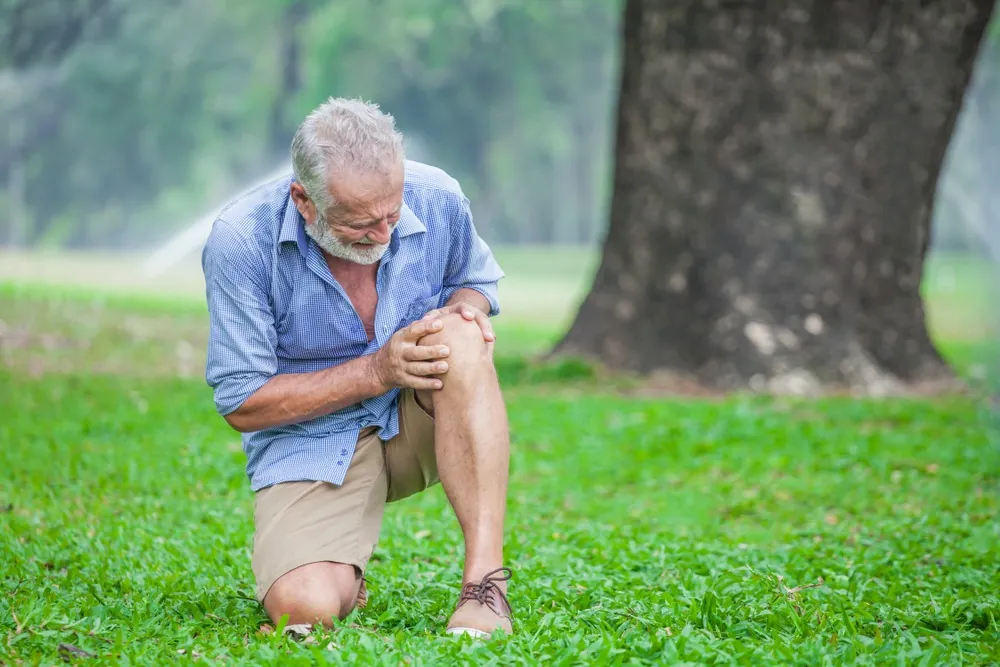Osteoarthritis is one of the most common pathologies. It develops mostly as a result of early joint wear or degeneration.
Knees, like hips and ankles, are subjected to heavy loads. As a result, osteoarthritis is more prone to develop in these joints.
Because of the dynamic nature of the joint, osteoarthritis of the knee produces profound discomfort that might increase with time.
This limiting kind of osteoarthritis is caused by a number of variables connected to a person’s age or activity.
Knee osteoarthritis must be treated as soon as feasible to minimize detrimental consequences on quality of life. Therefore, it’s critical to understand how it manifests and functions.
Symptoms of knee osteoarthritis
Osteoarthritis causes a piercing or dull ache in the joints. However, the disease’s influence can be considerably broader.
The following signs of osteoarthritis in the knees are good indicators:
- Ordinary movements that become painful (walking, standing or sitting)
- Pain that intensifies after physical activity or when resting
- The appearance of bony growths called osteophytes visible on X-rays
- Swelling in the joints
- Decreased flexibility
- A noticeable stiffness
- The sensation of friction between the bones
- Lack of balance when standing
Causes and risk factors
Osteoarthritis of the knee is caused by a change in the structure of the joint. The cartilage between the bones is eroded as a result of this disturbance.
This soft tissue is normally responsible for absorbing shocks and guaranteeing joint movement smoothness. When it erodes, though, it affects both the bone and the joint.
A change in the synovial fluid is the second cause of knee osteoarthritis. This viscous material lubricates the joint and aids in the absorption of stresses.
Osteoarthritis of the knee is more prone to occur when these two vital components stop working properly.
Knee osteoarthritis is more likely to occur under the following circumstances:
- Senior age
- Being overweight or obese
- Physical or professional activities that place regular stress on the joints
- Lack of physical activity
- Genetic predisposition or a family history of osteoarthritis
- A pre-existing injury to the meniscus or cartilage
- An injury to the ligaments
- A patellar or femoral fracture
- Bowed or bent knees (varus or valgus knees)
Osteoarthritis of the knee can be caused by a variety of illnesses, including:
- Rotatorio-femoral syndrome
- Gout
- Rheumatoid arthritis
Prevention
Osteoarthritis of the knee, as well as the pain that comes with it, can be difficult to manage in its latter stages.
In lesser situations, however, preventative and therapeutic steps might be taken:
- Practice low-impact exercise: Low-impact exercise is important for maintaining flexibility in your movements. Swimming, cycling, or yoga, for example, are all good options. Running and skiing, on the other hand, should be avoided since they put excessive strain on the afflicted joints.
- Lose weight: Reduce the load on supporting joints such as the knees by losing weight.
- Allow yourself sufficient rest: Get rest, especially if your discomfort flares up after physical activity. It’s critical to take care of your painful joints.
- Use mechanical aids: A cane or crutches can assist prevent placing unnecessary strain on the knees during a crisis. However, if the discomfort becomes unbearable, it must be treated.
- Take generic painkillers: Take over-the-counter pain relievers like acetaminophen and ibuprofen to relieve moderate discomfort. Of course, some of these may be incompatible with pre-existing conditions. To rule out this possibility, a health care expert should be consulted.
- Applying heat: To decrease swelling or moderate stiffness, use heat.
- Applying cold: For moderate to severe discomfort or substantial swelling, use cold.
Some symptoms of mild osteoarthritis can be effectively treated with these methods.
Severe discomfort that interferes with daily activities, on the other hand, necessitates a visit to a podiatrist or medical professional.
Treatments
Osteoarthritis of the knee is difficult to diagnose clinically. Physical and symptomatic exams are often used to make a diagnosis.
A biomechanical exam of the patient by the podiatrist can help with this task.
Following the diagnosis of osteoarthritis of the knee, the expert may recommend one of the following treatments:
- Non-steroidal anti-inflammatory drugs
- Physical therapy such as kinesitherapy or occupational therapy
- Corrective foot orthotics to relieve pressure or realign the tibiofemoral angle (in cases of osteoarthritis due to a valgus or varus knee)
Osteoarthritis of the knee can be treated in a variety of ways by a podiatrist.
A severe case, on the other hand, may necessitate more radical treatments, which you should discuss with your doctor:
- A viscosupplementation: A viscosupplementation is a liquid injection that replaces the lacking synovium and restores the knee’s cushioning qualities.
- Injection of hyaluronic acid: This technique seeks to restore joint lubrication while also acting as an anti-inflammatory.
- Injection of cortisone: This injection, which is given directly into the joint, helps to alleviate pain for a certain time.
Joint replacement surgery, on the other hand, is a last resort procedure that can be performed by your orthopedist.
PiedReseau – Learn more
Do you want to learn more about knee osteoarthritis? We have a wide range of material on the subject!
Though even if PiedRéseau is a valuable source of knowledge, nothing matches a consultation with a podiatrist.
Take care of your feet, they’re precious!

